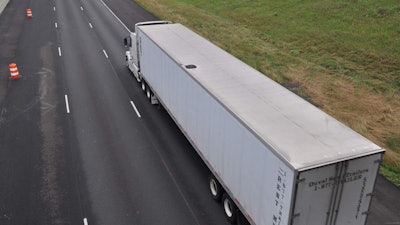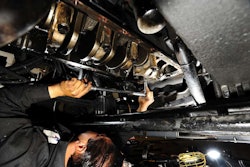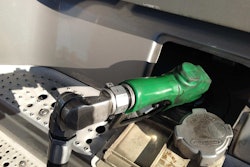
Per-mile costs for trucking companies surged in 2018 from the year prior, with across-the-board increases in spending driving carriers’ costs up 13 cents a mile on average in the year, according to the American Transportation Research Institute‘s annual survey of carrier spending.
For the seventh straight year, higher spending on driver wages and benefits was one of the chief contributing factors to rising business costs for carriers, though per-mile fuel costs also jumped in 2018 from 2017. Combined, fuel costs and driver wages and benefits accounted for more than 66% of carriers’ per-mile expenditures in 2018, according to ATRI’s report.
Upcoming Event

2019 CCJ Solutions Summit: Making Money in a Changing Market
With sessions at the event around:
» Improving your equipment life cycle;
» Turning your maintenance department into a profit center;
» Losing the customers you lose money on;
» Making money off the data you already generate;
» and more,
CCJ Solutions Summit will give you critical information to take your business to the next level. Join us, November 18-20, in Scottsdale, Arizona.
Register today.
Fuel costs climbed 6.5 cents a mile last year on average, while spending on driver wages rose 3.9 cents a mile — 10.4 cents of the total 13-cent increase in per-mile costs.
Costs of insurance premiums rose nine-tenths of a cent per mile last year, to 8.4 cents a mile on average.
Tires were the only expenditure category to not see an increase, remaining flat at 3.8 cents a mile.
All other categories saw fraction-of-a-penny increases. Truck purchase/lease payments rose a tenth of a cent to 26.5 cents a mile. Repair and maintenance costs climbed four-tenths of a cent to 17.1 cents a mile. Spending on tolls climbed to three cents a mile, and costs for permits and licensing climbed to 2.4 cents a mile.
Since 2016, carriers’ per-mile costs have climbed more than 25 cents per mile, according to ATRI’s numbers. Costs in 2017 rose 9.9 cents from 2016, ATRI reported last year, following 2016’s 1.7-cent-per-mile increase from 2015.
Costs had dropped significantly in 2015 from 2014, but the spending hikes the past two years have pressed per-mile spending above the recent high-water marks in 2014 and 2011.
Of survey respondents, 18% operate more than 1,000 power units, and 21% operate between 251 and 1,000 power units. A plurality of respondents (29%) operate between 26 and 100 power units; 6% operate less than 5 trucks, 15% operate between 5 and 25 trucks and 11% operate between 101 and 250 power units.
Survey respondents account for more than 125,000 power units and more than 460,000 trailers.











